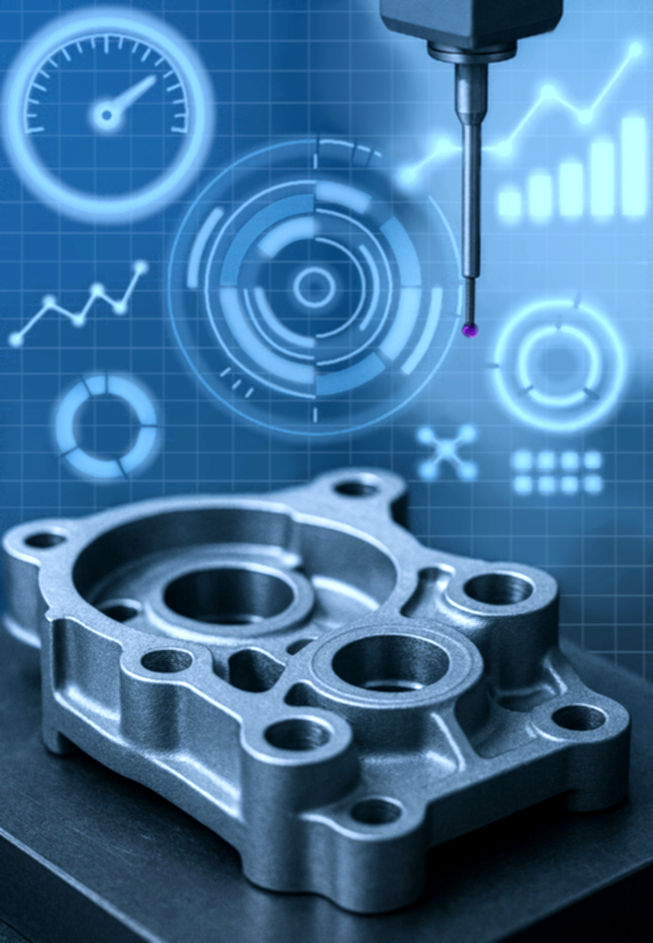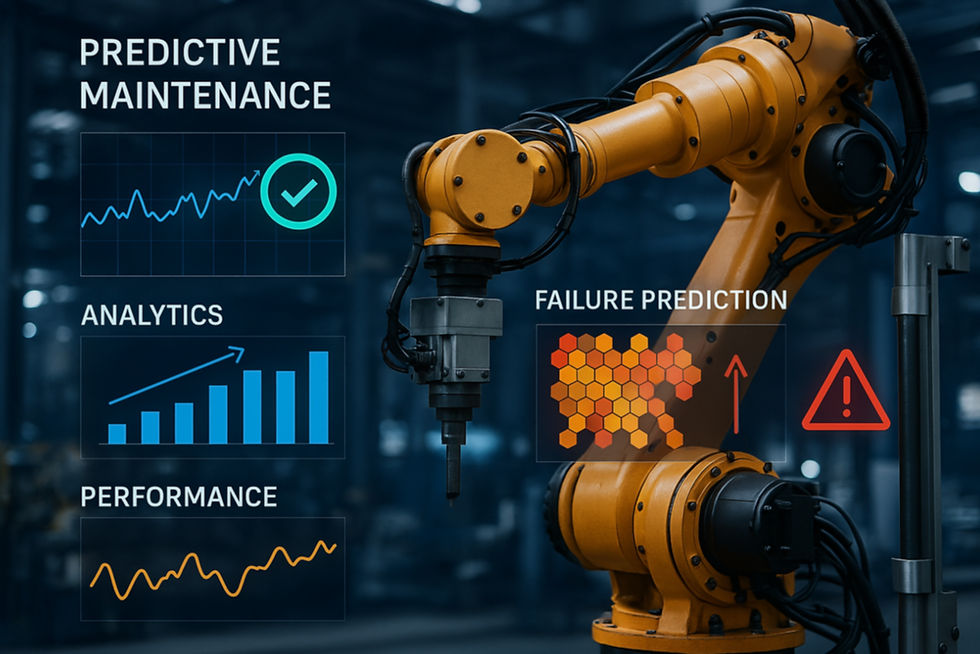The Metrology Revolution: Evolving from Inspection to Real-Time Process Control (August 2025)
- Adriana Gutierrez, Digital Media Producer

- Aug 7
- 3 min read
For decades, metrology—the science of measurement—was the final checkpoint in the manufacturing process. A finished part would be pulled from the line and sent to a quality lab for inspection, often using a coordinate measuring machine (CMM) to verify its dimensions. In the age of smart manufacturing, this approach is no longer enough. The metrology revolution is transforming quality from a reactive, end-of-line function into a proactive, in-process driver of operational excellence. Welcome to the era of Metrology 4.0, where measurement is seamlessly integrated into every stage of production to ensure parts are “right the first time.”

From Post-Production Check to Real-Time Feedback
The shift from post-production inspection to real-time process control is the defining characteristic of Metrology 4.0. Instead of simply identifying a defective part at the end of the line, modern metrology systems are designed to detect and correct deviations as they occur. This is made possible by a new generation of smart measurement technologies that provide a constant stream of high-fidelity data.
Technologies like laser scanners, optical CMMs, and robotic inspection systems are now being integrated directly into the production line. This allows for 100% inspection of parts as they are being made, providing instant feedback on dimensional accuracy and surface topography. This data is not just for logging; it is fed into a closed-loop system, where it can be used to automatically adjust machine tools, optimize parameters, and prevent the production of non-conforming parts before they become waste (Metrology News, Beyond Inspection: Metrology 4.0 in Smart Manufacturing, August 2025).
The Strategic Benefits of In-Line Metrology
This move to in-line metrology delivers a host of strategic benefits for manufacturers, fundamentally altering how they manage production quality and efficiency.
Waste and Rework Reduction: By catching and correcting issues instantly, manufacturers can significantly reduce scrap rates and eliminate the need for costly, time-consuming rework. This shift directly impacts a company's bottom line and its sustainability efforts by conserving raw materials and energy (eleymet.com, The Importance of Metrology in Manufacturing, June 2025).
Enhanced Process Control: Real-time measurement data provides a deeper understanding of process variability. This allows engineers to identify root causes of deviations and implement continuous improvements. When combined with technologies like AI and machine learning, this data can even be used to predict potential quality issues before they arise, enabling truly proactive maintenance and control (PwC, Responsible AI in Industry, February 2025).
Faster Product Development: The ability to rapidly validate parts and prototypes with in-line metrology accelerates the new product introduction (NPI) cycle. This allows for quicker iterations and more confident scaling from prototype to full-scale production.
True Digital Traceability: Every measured part can be digitally documented, creating a complete and unalterable record of its quality. This traceability is essential for meeting stringent industry standards and regulatory requirements and provides an invaluable resource for warranty analysis and customer service (DTU Research Database, The Role of Geometrical Metrology in Manufacturing–An Update, July 2025).
The Future of Metrology: Fully Automated and Integrated
Looking ahead, Metrology 4.0 is set to become even more integrated and autonomous. The market for industrial metrology is projected to grow from USD 14.31 billion in 2025 to USD 19.03 billion by 2030, driven by the increasing integration of IoT sensors, AI, and autonomous manufacturing systems (MarketsandMarkets, Industrial Metrology Market Size, Share & Trends, August 2025).
The next evolution will see metrology systems operating with minimal human intervention. Using advanced software, measurement devices will automatically interpret data, make decisions, and communicate seamlessly across the digital platforms of the smart factory, from the manufacturing execution system (MES) to the enterprise resource planning (ERP) system. The ultimate goal is a closed-loop, lights-out quality system that drives a new level of operational efficiency and manufacturing excellence.
Conclusion
In August 2025, metrology is no longer a static, behind-the-scenes activity. It is at the heart of the smart factory, serving as the eyes and ears of the production line. By embracing Metrology 4.0 and integrating advanced measurement technologies for real-time process control, manufacturers can move beyond reacting to problems and proactively build a culture of quality. This shift not only reduces waste and increases efficiency but also establishes a foundation of precision and trust that is indispensable for long-term success in the modern manufacturing landscape.





